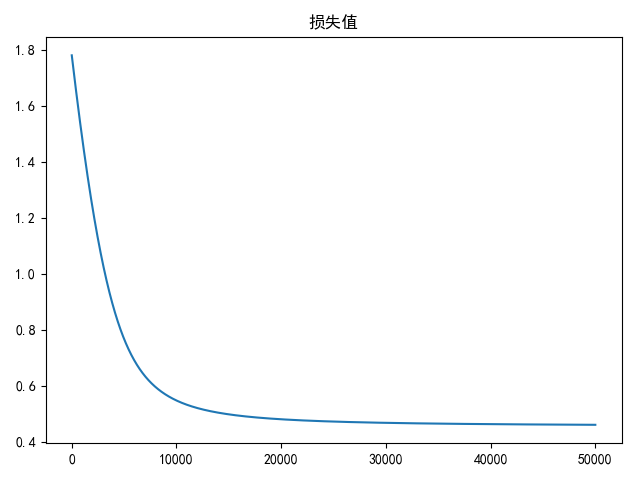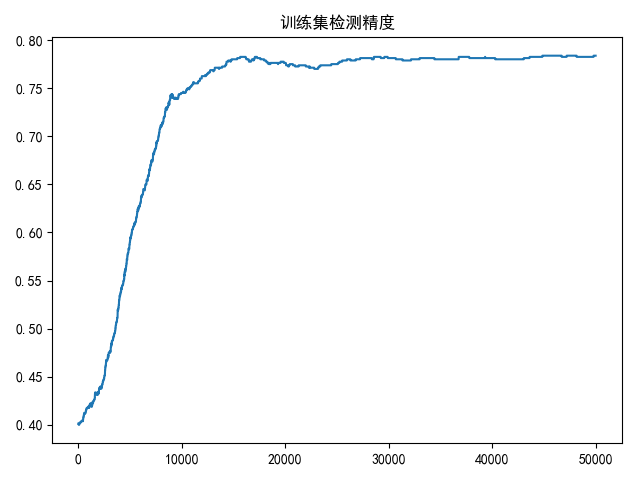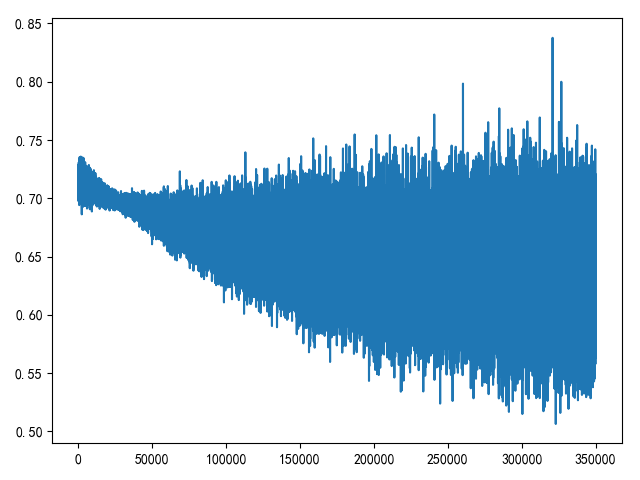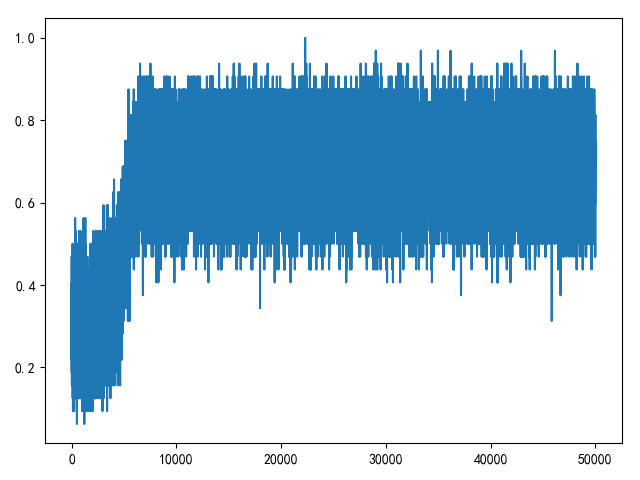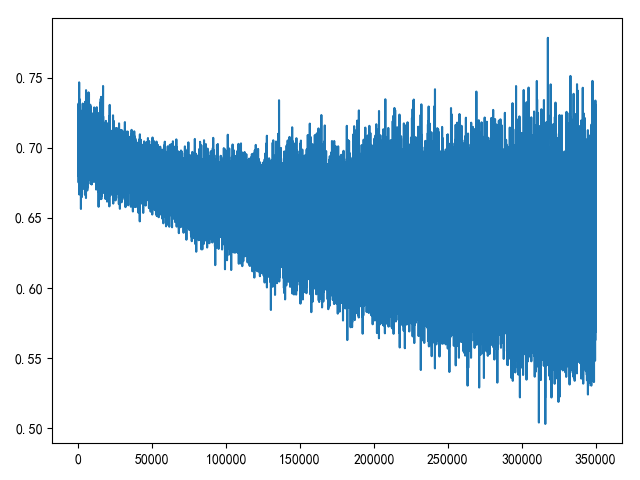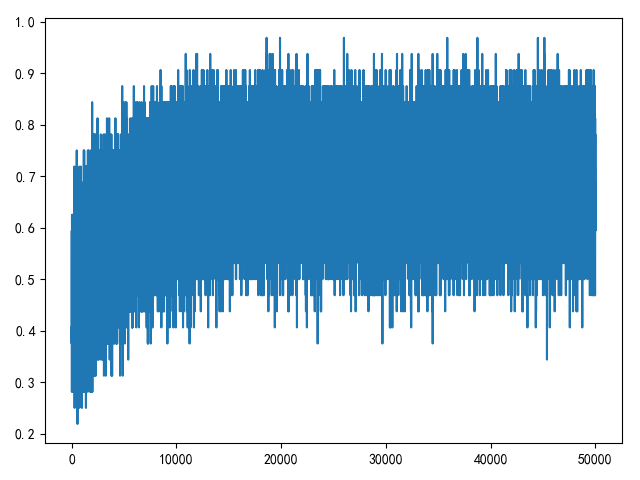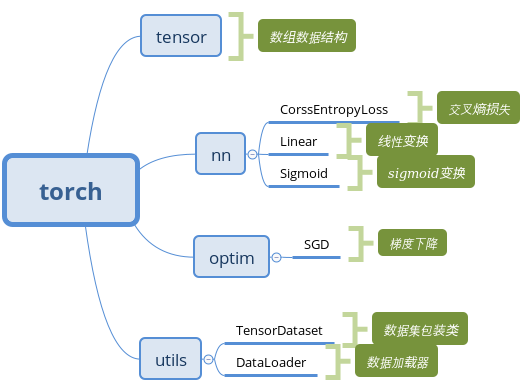1
2
3
4
5
6
7
8
9
10
11
12
13
14
15
16
17
18
19
20
21
22
23
24
25
26
27
28
29
30
31
32
33
34
35
36
37
38
39
40
41
42
43
44
45
46
47
48
49
50
51
52
53
54
55
56
57
58
59
60
61
62
63
64
65
66
67
68
69
70
71
72
73
74
75
76
77
78
79
80
81
82
83
84
85
86
87
88
89
90
91
92
93
94
95
96
97
98
99
100
101
102
103
104
105
106
107
108
109
110
111
112
113
114
115
116
117
118
119
120
121
122
123
124
125
126
127
128
129
130
131
132
133
134
135
136
137
138
139
140
141
142
143
144
145
146
147
148
149
150
| import matplotlib.pyplot as plt
import numpy as np
import pandas as pd
from sklearn.model_selection import train_test_split
import warnings
warnings.filterwarnings('ignore')
data_path = '../data/german.data-numeric'
def load_data(tsize=0.8, shuffle=True):
data_list = pd.read_csv(data_path, header=None, sep='\s+')
data_array = data_list.values
height, width = data_array.shape[:2]
data_x = data_array[:, :(width - 1)]
data_y = data_array[:, (width - 1)]
x_train, x_test, y_train, y_test = train_test_split(data_x, data_y, train_size=tsize, test_size=(1 - tsize),
shuffle=shuffle)
y_train = np.atleast_2d(np.array(list(map(lambda x: 1 if x == 2 else 0, y_train)))).T
y_test = np.atleast_2d(np.array(list(map(lambda x: 1 if x == 2 else 0, y_test)))).T
return x_train, y_train, x_test, y_test
def init_weights(inputs):
"""
初始化权重,符合标准正态分布
"""
return np.atleast_2d(np.random.uniform(size=inputs)).T
def sigmoid(x):
return 1 / (1 + np.exp(-1 * x))
def logistic_regression(w, x):
"""
w大小为(n+1)x1
x大小为mx(n+1)
"""
z = x.dot(w)
return sigmoid(z)
def compute_loss(w, x, y, isBatch=True):
"""
w大小为(n+1)x1
x大小为mx(n+1)
y大小为mx1
"""
lr_value = logistic_regression(w, x)
if isBatch:
n = y.shape[0]
res = -1.0 / n * (y.T.dot(np.log(lr_value)) + (1 - y.T).dot(np.log(1 - lr_value)))
return res[0][0]
else:
res = -1.0 * (y * (np.log(lr_value)) + (1 - y) * (np.log(1 - lr_value)))
return res[0]
def compute_gradient(w, x, y, isBatch=True):
"""
梯度计算
"""
lr_value = logistic_regression(w, x)
if isBatch:
n = y.shape[0]
return 1.0 / n * x.T.dot(lr_value - y)
else:
return np.atleast_2d(1.0 * x.T * (lr_value - y)).T
def compute_predict_accuracy(predictions, y):
results = predictions > 0.5
res = len(list(filter(lambda x: x[0] == x[1], np.dstack((results, y))[:, 0]))) / len(results)
return res
def draw(res_list, title=None, xlabel=None):
if title is not None:
plt.title(title)
if xlabel is not None:
plt.xlabel(xlabel)
plt.plot(res_list)
plt.show()
if __name__ == '__main__':
train_data, train_label, test_data, test_label = load_data()
mu = np.mean(train_data, axis=0)
std = np.std(train_data, axis=0)
train_data = (train_data - mu) / std
test_data = (test_data - mu) / std
train_data = np.insert(train_data, 0, np.ones(train_data.shape[0]), axis=1)
test_data = np.insert(test_data, 0, np.ones(test_data.shape[0]), axis=1)
lr = 0.0001
w = init_weights(train_data.shape[1])
epoches = 50000
batch_size = 128
num = train_label.shape[0]
loss_list = []
accuracy_list = []
loss = 0
best_accuracy = 0
best_w = None
for i in range(epoches):
loss = 0
train_num = 0
for j in range(0, num, batch_size):
loss += compute_loss(w, train_data[j:j + batch_size], train_label[j:j + batch_size], isBatch=True)
train_num += 1
gradient = compute_gradient(w, train_data[j:j + batch_size], train_label[j:j + batch_size], isBatch=True)
tempW = w - lr * gradient
w = tempW
loss_list.append(loss / train_num)
accuracy = compute_predict_accuracy(logistic_regression(w, train_data), train_label)
accuracy_list.append(accuracy)
if accuracy > best_accuracy:
best_accuracy = accuracy
best_w = w.copy()
draw(loss_list, title='损失值')
draw(accuracy_list, title='训练集检测精度')
print('train accuracy: %.3f' % (max(accuracy_list)))
test_accuracy = compute_predict_accuracy(logistic_regression(best_w, test_data), test_label)
print('test accuracy: %.3f' % (test_accuracy))
|
